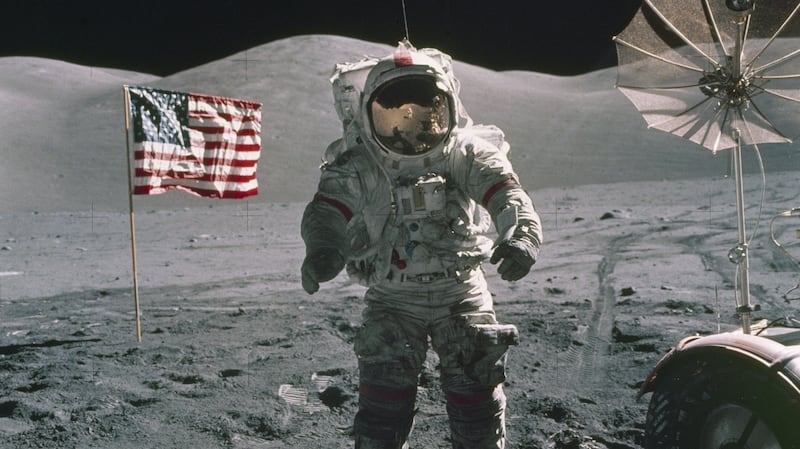Eugene A Cernan, the commander of the Apollo 17 lunar-landing mission in 1972 and the last human to walk on the moon, has died, aged 82.
A ferocious competitor with a test pilot’s reckless streak, Cernan rocketed into space three times, was the second American to drift weightless around the world on a tether, went to the moon twice and shattered aerospace records on the Earth and the moon.
He also slid down a banister on a visit to the White House and once crashed a helicopter in the Atlantic while chasing a dolphin. Skimming the lunar surface in a rehearsal for the first manned landing, he erupted with salty language heard by millions when his craft briefly spun out of control.

Three and a half years after Neil A Armstrong took mankind’s first step onto the lunar surface in 1969, Cernan, a US navy captain and one of the nation’s most experienced astronauts, landed with a geologist-astronaut near the Sea of Serenity in the final chapter of the Apollo programme, America’s audacious venture to fulfil President John F Kennedy’s 1961 pledge to put Americans on the moon.
Cernan was the last of 12 Americans to set foot on the moon in six Apollo landings. While Apollo 17 conveyed the drama of televised moonwalks, the awesome historic element of the Armstrong flight had faded, along with public interest in lunar missions that by 1972 had begun to seem repetitive.
Still, his mission was a technological triumph. While Ronald E Evans, a navy commander, piloted a command ship in lunar orbit, Cernan and Harrison H Schmitt, the first scientist to go to the moon, descended to the virtually airless, soundless surface in a four-legged lander that settled in a narrow valley of boulders and craters. After a 250,000-mile voyage from Earth, they put down 300ft from their target.
“The Challenger has landed,” Cernan announced in a broadcast to the world the Apollo crew saw hanging in the sky. “I’d like to dedicate the first step of Apollo 17 to all those who made it possible.”
He and Schmitt found themselves in a desolate but recognisable landscape near the Taurus Mountains and the Littrow Crater, a region of hills, cliffs and escarpments littered with tumbled rocks. After establishing a nuclear-powered base station, they set up scientific experiments and began three days of explorations on foot and in a battery-powered rover mounted with a television camera.
The mission completed, the captain took his last steps on the lunar surface and spoke for posterity.
“America’s challenge of today has forged man’s destiny of tomorrow,” he said in words slightly garbled on recordings. “And as we leave the moon and Taurus-Littrow, we leave as we came, and, God willing, we shall return, with peace and hope for all mankind.”
Eugene Andrew Cernan was born in Chicago on March 14th, 1934, to Andrew Cernan, a supervisor at a naval installation, and the former Rose Cihlar.
He graduated from Proviso Township High School in Maywood, Illinois, in 1952, and received an electrical engineering degree from Purdue in 1956 and a master’s in aeronautical engineering from the Naval Postgraduate School in Monterey, California, in 1963. As a naval aviator, he logged 5,000 hours of flying time and 200 landings on aircraft carriers.
In 1961, he married Barbara Jean Atchley. They divorced in 1981. He later married Jan Nanna, who survives him, as do his daughter, Teresa Cernan Woolie; two stepdaughters, Kelly Nanna Taff and Danielle Nanna Ellis; nine grandchildren; and a sister, Dolores Riley.
Cernan’s final spaceflight set several records: the longest lunar landing flight (nearly 302 hours) and the longest lunar surface extravehicular activities (22 hours and six minutes). Cernan also set a career record of 566 hours in space, 73 of them on the moon’s surface.
New York Times syndicate











